For more than 500 years, pottery in Japan has found a new lease of life through kintsugi, the traditional Japanese art form of sealing cracks with lacquer and gold powder. This technique of repair embodies the wabi-sabi aesthetic, which embraces the beauty in imperfection. Kintsugi can also be seen as a traditional sustainable art form, appealing to our modern need to better manage society’s resources.
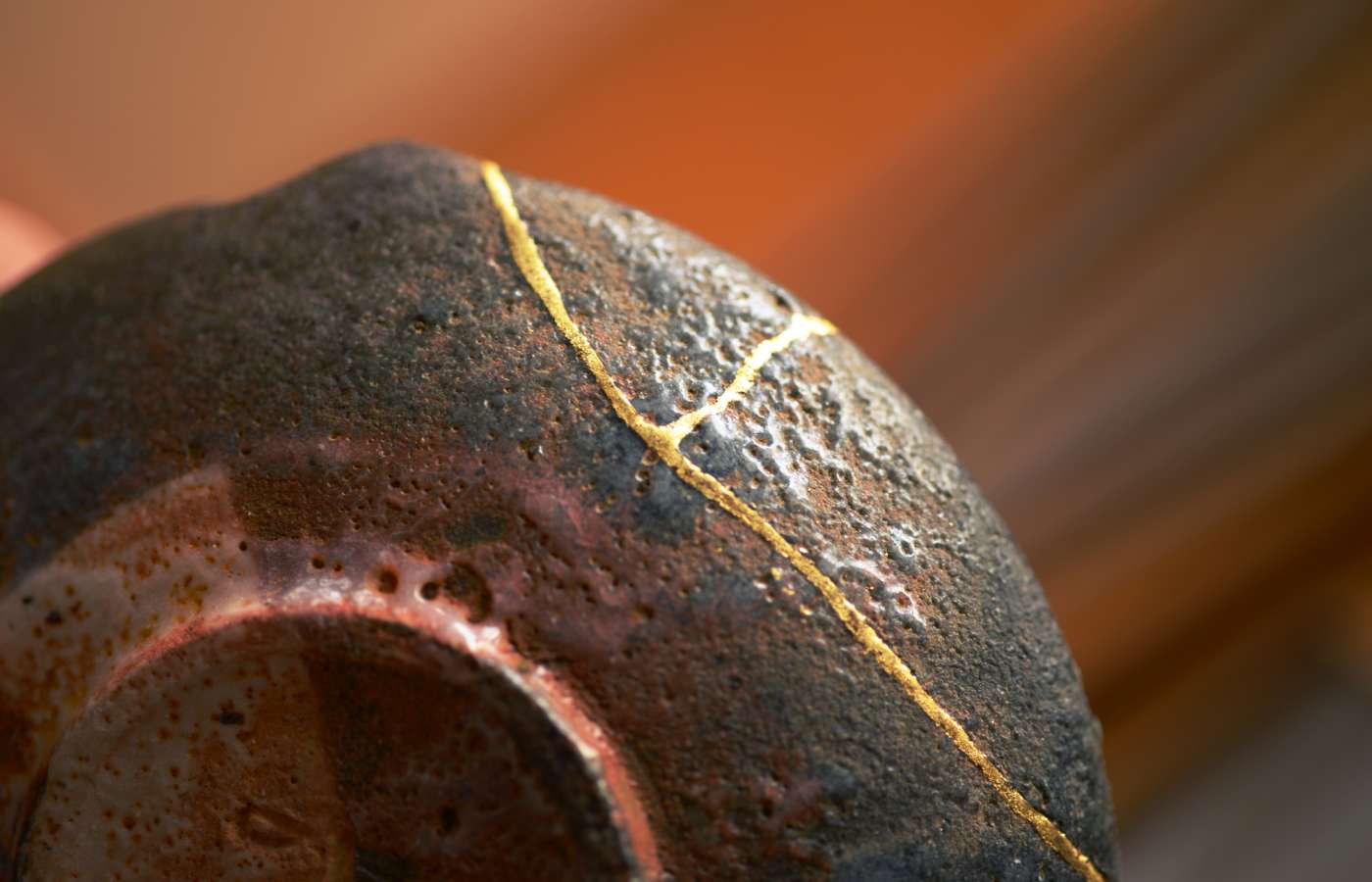
An example of kintsugi used to repair a ceramic plate.
Second life: Making the old new again
Back when resources weren’t so abundant, people were more likely to repair household items than replace them. In the case of pottery, artisans used to repair broken ceramic using metal staples before adhesives were readily available. Some historical sources suggest that the art of kintsugi – the practice of sealing cracks in damaged pottery with gold and lacquer – was introduced as a more aesthetically pleasing solution to mending valuable ceramics.
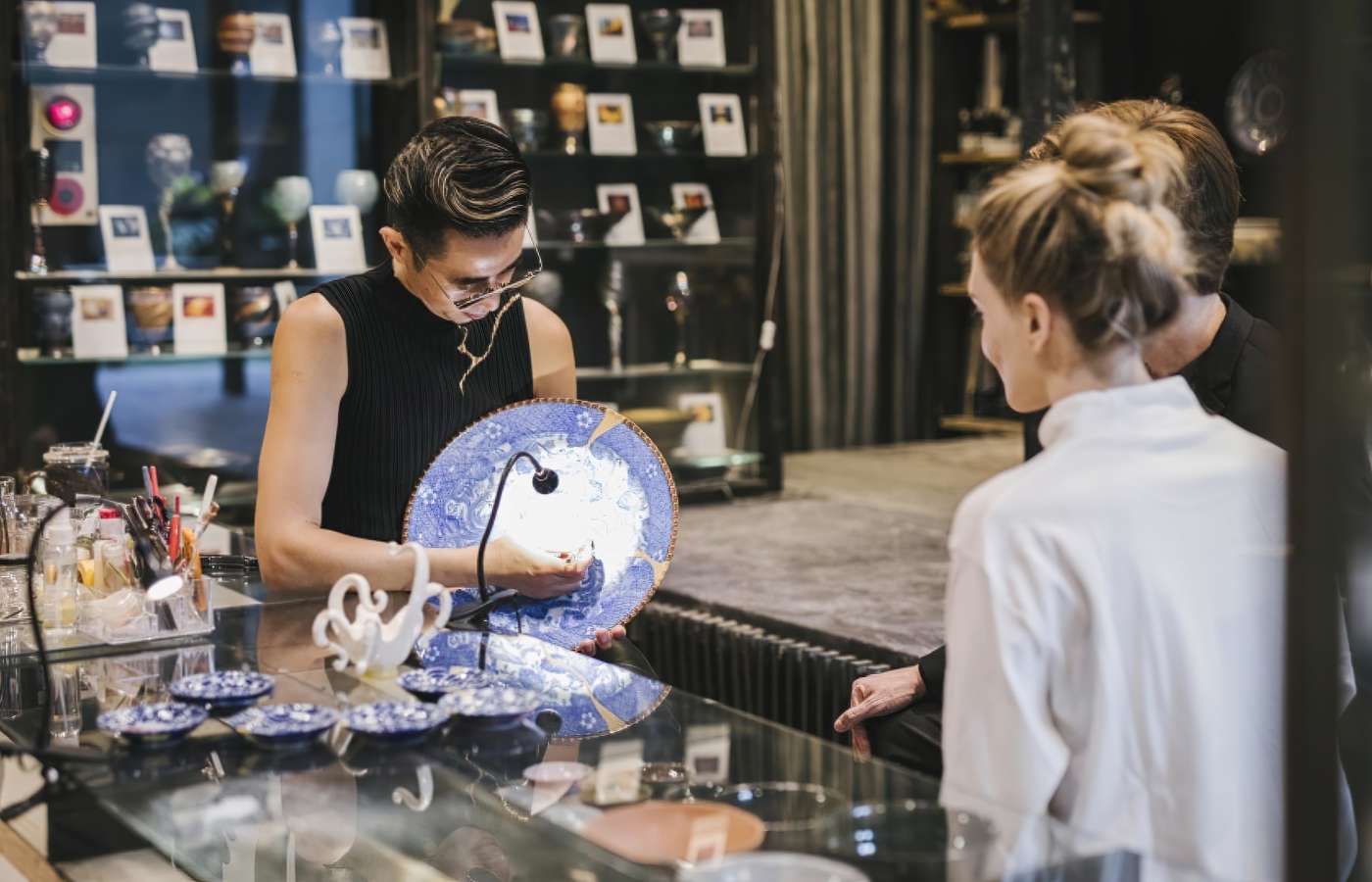
Kintsugi remains a refined art form in Japan, taking many years of practice to master.
Photo credit: Taku Nakano Ceramic Arts
With its beginnings roughly 500 years ago, kintsugi transformed these objects to make the breakage a mark of aesthetic value, rendering them more treasured than in their previously ‘perfect’ forms.
Embracing imperfection through the art of kintsugi
Roughly translated as ‘golden joinery’, kintsugi usually involves applying a natural lacquer dusted with gold powder. It might seem extravagant as a method of repair, but as an art form it questions our obsession with perfection and newness by reframing our aversion to change. Closely paralleling the Buddhist idea of wabi-sabi, the impermanence of an object is revered as the natural progression of life. The art form embraces the flaws and imperfections of aged objects by highlighting them with valuable materials, such as gold or silver.
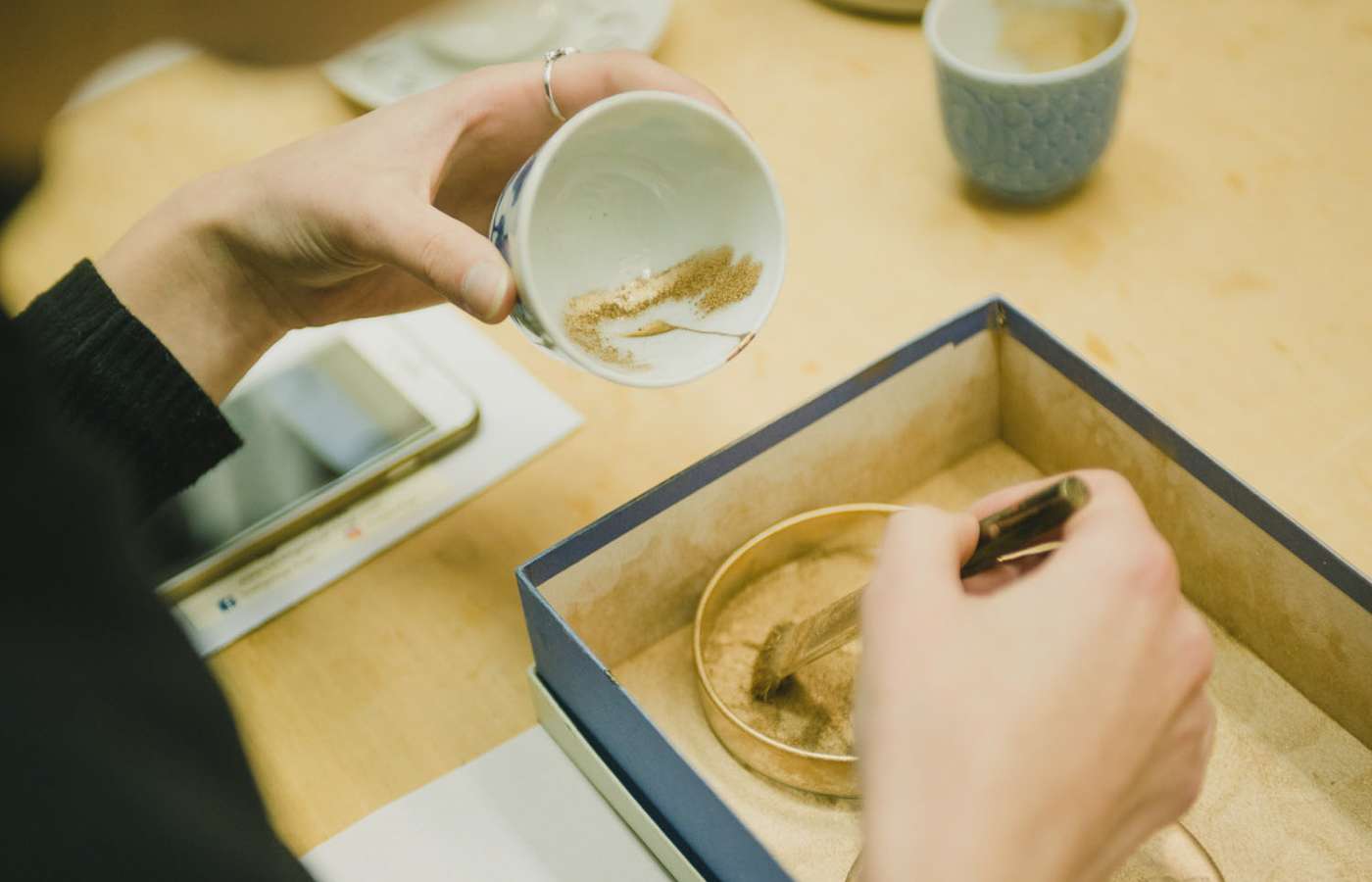
As the name suggests, gold powder is most often used in the kintsugi process.
Photo credit: Deeper Japan
Understanding kintsugi materials and technique
Cracks in ceramic pottery are traditionally bound using urushi lacquer, made from the sap of the eponymous indigenous tree. In its raw form, urushi is poisonous to the touch and can take up to five years to process before use, making it expensive to harvest. After filtering and homogenization, it forms a hard, waterproof surface when dried properly. The lacquer is particularly precious, not only because of the complex processing involved, but also because one 20-year-old tree can only produce a cup of lacquer before being cut down.
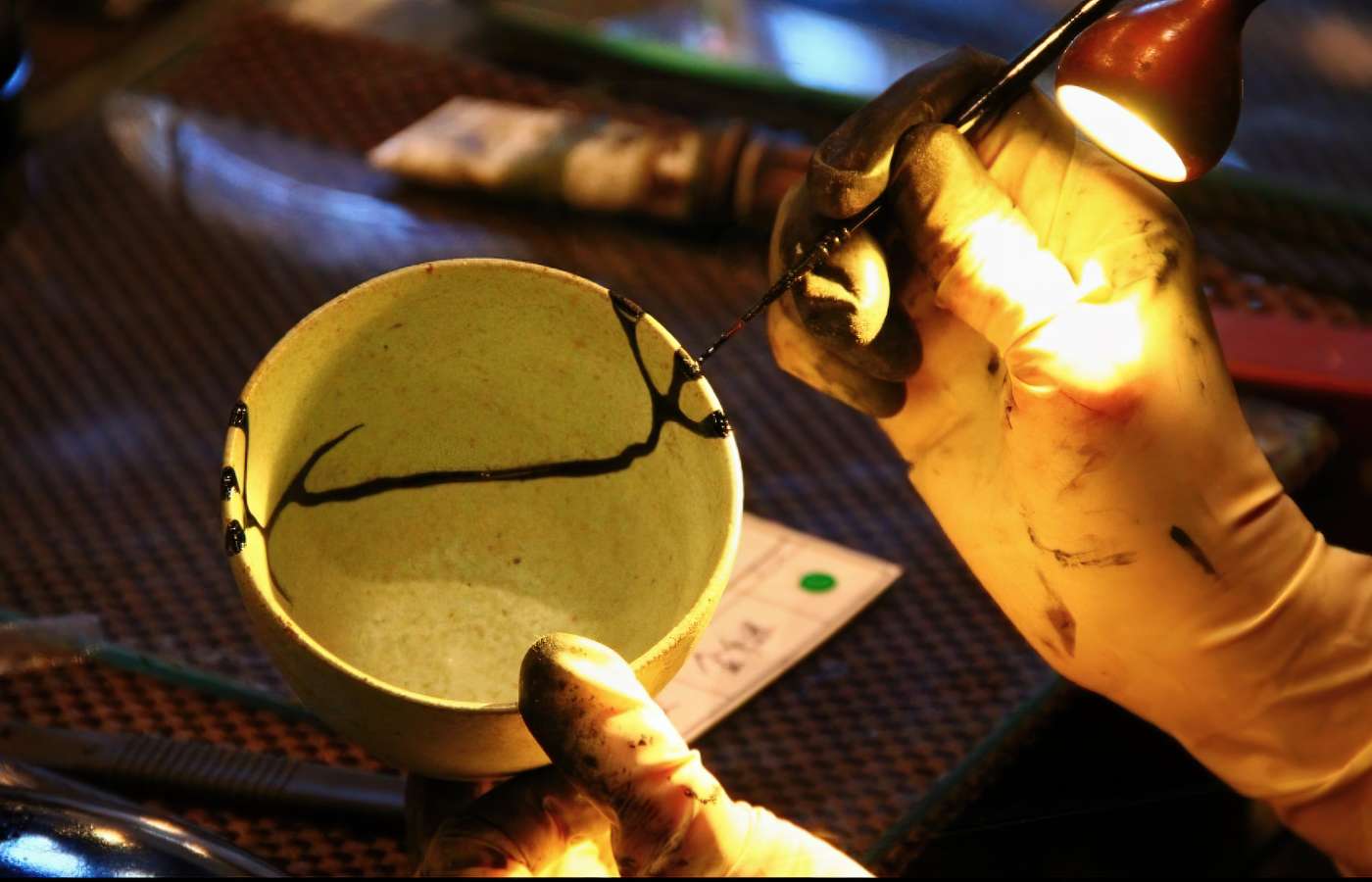
The kintsugi process is often very elaborate and needs a bit of patience.
Photo credit: Taku Nakano Ceramic Arts
Some craftsmen opt to shorten the drying time and expense by using synthetic epoxy and lacquer made of cashew shells. Others make glue from rice flour, water, and raw lacquer as a binder, with various mixes of urushi or putty as a filler for missing pieces. Once each layer in the process has hardened, the final lacquer layer is coated with pure gold powder – or in some cases, brass or silver powder.
Getting a hands-on kintsugi experience
As a wider audience has become familiar with the kintsugi aesthetic and its appeal as a sustainable art form, more workshops and home kits are popping up online, and not just for pottery. The best way to fully understand a complex craft like kintsugi, however, is to experience it hands-on where a seasoned practitioner can assist you.
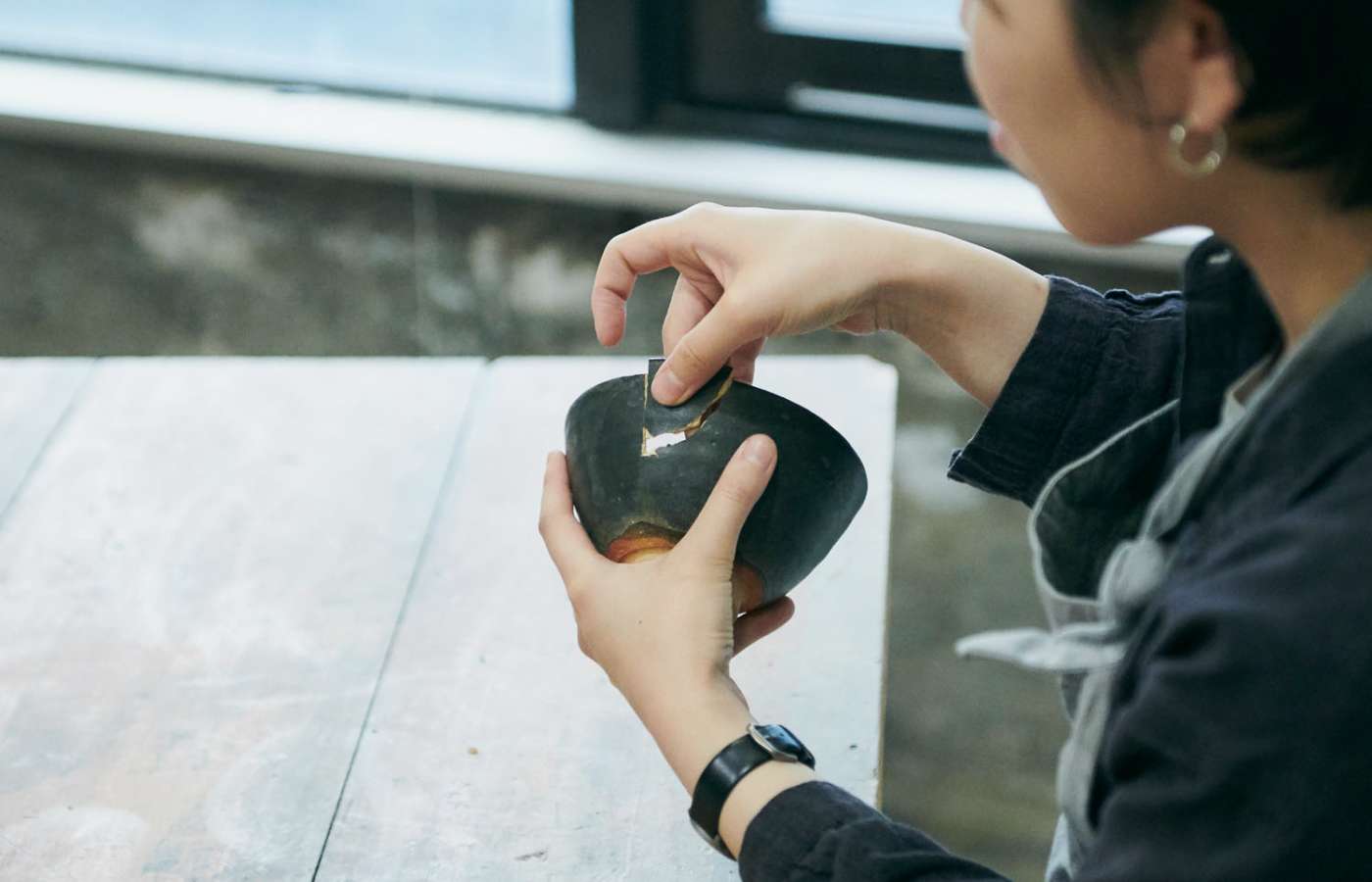
Your broken pottery can find new life at a kintsugi workshop.
Photo credit: Deeper Japan
If you are coming to Japan, take the opportunity to book a workshop where you can bring your own piece in for repair. With the completely natural process, because of drying times, it can take several months to complete the process using traditional materials. As this is prohibitive for most travelers, many places offer short introductory courses for visitors with just a few hours to spare.
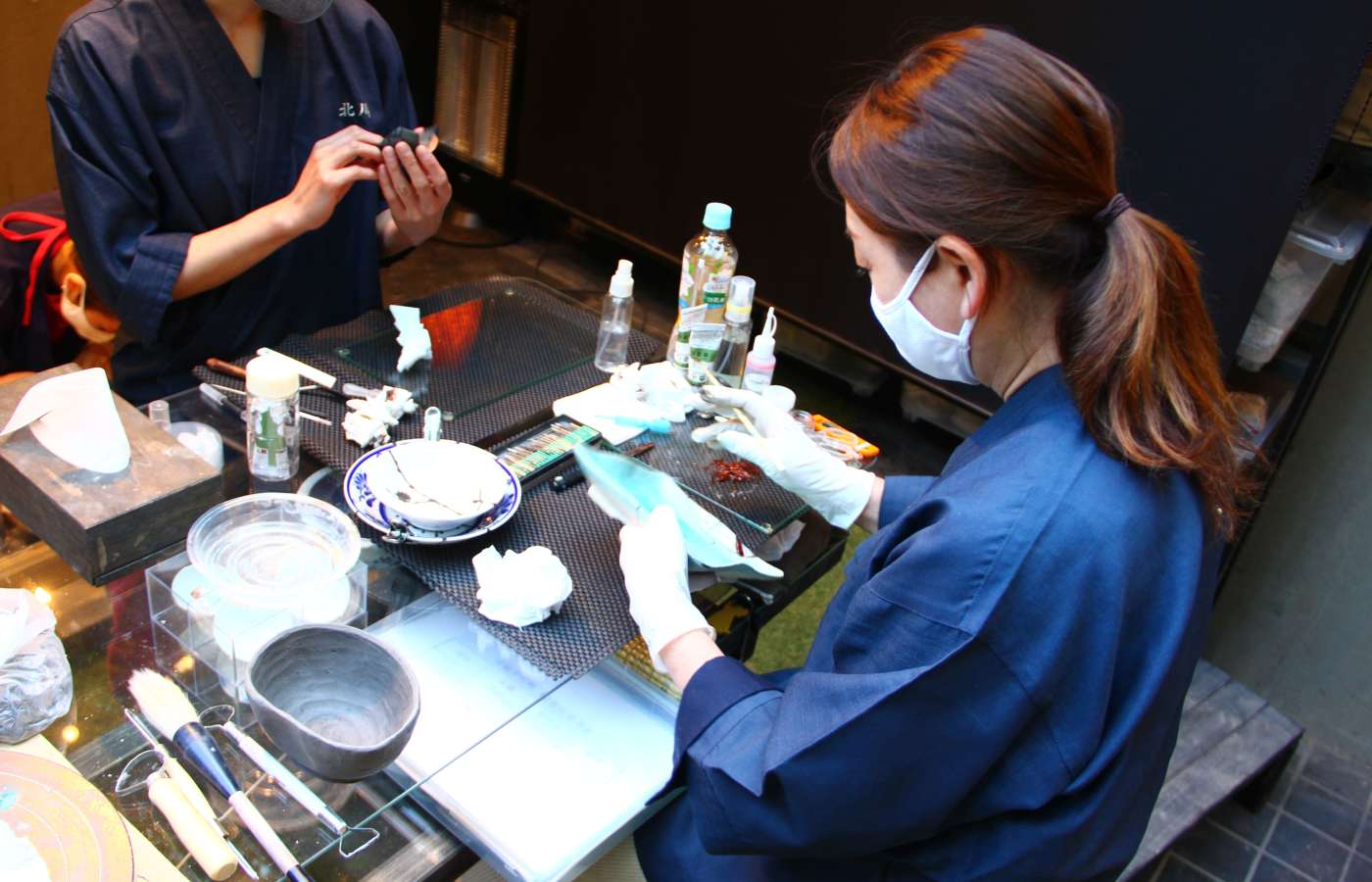
A wide range of techniques and materials are used in the kintsugi process.
Photo credit: Taku Nakano Ceramic Arts
Two of these places, Deeper Japan and Taku Nakano Ceramic Arts, have workshops that employ different types of materials ranging from synthetic bond to genuine urushi lacquer. Check the details in advance so you can choose a course that matches your pace and budget.
Mottainai: Living our lives more sustainability
The concept of “waste not, want not,” or “mottainai,” is an age-old philosophy in Japan. It comes from a time when limited resources inspired creative reuse, while also instilling a respect and reverence for what was available. Recently, as more and more people react to the excesses of consumer culture, mottainai has been adopted as a byword for issues surrounding sustainable living. With waste now a global issue, it’s easy to see the value in reassessing our habits. Kintsugi as an art form can help us to cherish what we have while preserving it for generations to come.
-
About the author
Author: Jamie Lee Reed
Profile: Based in Tokyo but raised in the Appalachians outside of NYC, Jamie continues to seek that fine balance between city-life and the great outdoors. As a freelance writer, artist and yoga teacher, she is always on the lookout for new ways to share her passions and experiences with a larger audience.


















































